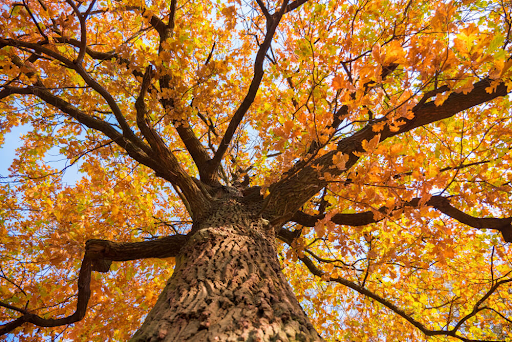Discover the Best Time of Year to Cut Down Trees
- treeguys44
- Mar 15, 2024
- 4 min read
Updated: Mar 28, 2024

Ever stood under the shade of a towering tree in your yard and thought, "Is it time for you to go?" Well, you're not alone. Cutting down trees, a task filled with equal parts necessity and emotion, is a crucial part of maintaining a healthy, safe, and beautiful landscape. But here's the million-dollar question: When is the best time to cut down trees? Strap in, folks, because we're about to dive deep into the world of tree removal timing, ensuring your green giants only come down when the time is just right.
The Seasonal Clock: Winter Wonders
Believe it or not, winter is the Oscar-winning season for cutting down trees. Yes, you heard that right. When the air turns crisp and the leaves have taken their final bow, trees enter a dormant phase. This is when they take a well-deserved nap, halting their growth and conserving energy for the spring revival.
Why does this matter? Well, cutting down a tree during its dormancy comes with a bucketload of benefits. For starters, the absence of foliage makes it easier to see the tree's structure, allowing for more precise cuts and safer removal. Plus, the frozen ground and lack of active garden life minimize damage to your yard and nearby plants.
Spring and Summer: The Plot Thickens
Moving on to the warmer months, spring and summer are like the blockbuster season for tree growth. This is when trees are in full celebrity mode, flaunting their lush foliage and engaging in rapid growth. While it's tempting to cut down trees during this period, especially when they're interfering with your garden's aesthetic or safety, it's also when trees are most vulnerable.
Cutting down trees in spring or summer can be more challenging due to the increased foliage and the tree's active life cycle. Moreover, it can cause unnecessary stress to the tree and its surrounding ecosystem, potentially leading to disease and infestation.
Autumn: The Middle Ground
Autumn, with its fiery foliage and temperate weather, offers a middle ground. While it's not the prime time for tree removal, it's not entirely off the table either. During early autumn, trees begin to slow down their growth in preparation for the winter dormancy, making it somewhat safer to cut down trees than in the bustling spring or summer.
However, consider this a last call before winter. The ideal window for tree removal in autumn is narrow, as you'll want to complete the task before the trees become too dormant and the weather too unpredictable.
Professional Tips and Tricks
Consult with an Arborist: Before you decide to cut down a tree, it's crucial to consult with a professional arborist. They can provide invaluable insight into the health of your tree and whether it can be saved through pruning or other means.
Check Local Regulations: Many areas have specific regulations regarding tree removal. Ensure you're not running afoul of local laws by doing your homework beforehand.
Safety First: Tree removal can be dangerous. Unless you're experienced and equipped with the right tools, consider hiring professionals to handle the job.
Consider the Wildlife: Trees are not just wood and leaves; they're ecosystems. Before cutting down a tree, consider the impact on local wildlife and explore relocation options for any critters calling it home.
Wrapping It Up
In the grand scheme of things, the best time to cut down trees is during the quiet slumber of winter. However, life and circumstances don't always align with the ideal. Should you find yourself needing to remove a tree outside of winter, remember the key takeaways: consult a professional, prioritize safety, and respect the local ecosystem.
By choosing the right time to cut down trees, not only do you ensure the safety and health of your landscape, but you also pay homage to the cycle of nature, ensuring that your garden thrives for seasons to come. So, before you make that final cut, take a moment to consider the timing. Your yard—and the environment—will thank you for it.
FAQs
Q: Can I cut down a tree by myself?
A: While it's possible for individuals to cut down small trees themselves, it's highly recommended to consult with or hire professionals for larger trees or complex situations. Safety should always be your top priority.
Q: How do I know if a tree needs to be cut down?
A: Signs that a tree may need to be removed include visible decay, structural damage, disease, or if it poses a safety hazard to structures or people. An arborist can provide a thorough assessment.
Q: Does cutting down a tree harm the environment?
A: Removing a tree does have an environmental impact, especially if it's a mature specimen. However, in cases where a tree is diseased, poses a danger, or is part of a controlled management plan, removal can be the most responsible action. Planting new trees in place of those removed can help mitigate environmental impacts.
Remember, whether it's time to let go of an old tree friend or make room for new growth, doing so with care, respect, and the right timing can make all the difference in the world.




Comments